Laos with Adventures Abroad
This is the first of many posts to come reporting on a trip to Southeast Asia last March with Adventures Abroad. The trip started in Laos and ended in Cambodia with two weeks in Vietnam in the middle. It was our first trip to this area of the world so we started a bit early and spent five days in Bangkok before joining the AA group in Laos. If you are going on a similar tour and haven’t been to Bangkok before I highly recommend spending some time there. In order to get to Laos you very well might have to go through Bangkok anyway.
In this post I am going to give the reader an overview of this country that sees few tourists and frankly can pose some real challenges to even the most seasoned of travellers. But I’ll also spell out why Laos should be on any intrepid explorer’s bucket list. So let’s start with a very brief history of this former French colony.
A Brief History of Laos
People have been migrating to and through Laos for over 50,000 years with the result that it is now one of the most ethnically diverse countries in the world with 50 recognized ethnic groups divided into over 160 subgroups. All this in a country with only 7 million inhabitants. The dominant group by far are the Lao people who in turn are a subgroup of the Thai (Tai) who began a long migration south and west out of China in the 1200’s settling in much of what is modern day Laos. Other Thais continued on into what became Siam and then Thailand. The Lao people joined many, many other ethnic groups some of whom had been there for thousands of years. However, archaeology got off to a very late start in Laos and even today not that much is definitively known about the state of affairs before the Laotian migration. Legends and myths are abundant, but actual facts are in short supply.
What is known is that the Lao religious, cultural and architectural practices were heavily influenced by both Indian Buddhism and the Khmer people who had built a great empire to the south hundreds of years earlier and were now in decline.
The first truly recognizable Laotian kingdom was that of Lan Xang that was founded in 1353 and lasted for 350 years before being split up. Also known as ‘The Land of a Thousand Elephants’ this was the golden age of Laos and the basis for much of its historical pride, at least among the 50% of Laotians who are also Lao. Not so much I’m guessing for the other 50%.
This is how southeast Asia was divided politically in 1540 with Lan Xang having borders remarkably close to what Laos has today.
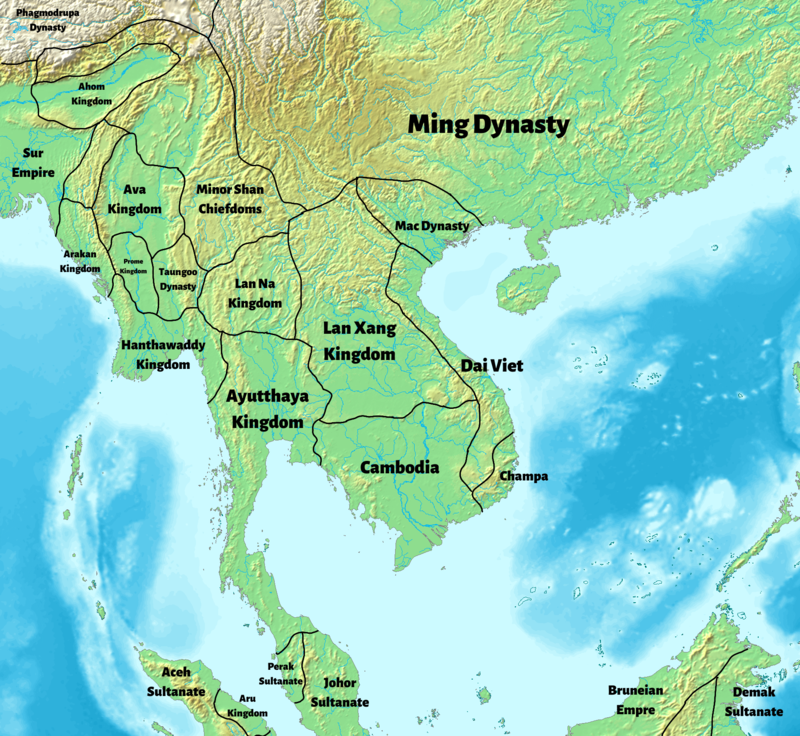
I’ll skip over the interminable wars between the various states that saw them invade their neighbours repeatedly, sometimes winning, sometimes losing. The bottom line is the Lan Xang survived and under King Sourigna Vongsa in the 17th century was at its height of power, wealth and respect from its neighbours. Unfortunately it didn’t last.
In 1707 Lan Xang was split into three parts, Luang Prabang in the north, Vientiane in the middle and Champasak in the south. This made them individually less able to fend off attacks by the increasing aggressive Ayutthaya in the south and Dai Viet in the north. This is what southeast Asia looked like by 1750 and it marked the beginning of a long and horrible time for people of Laos.
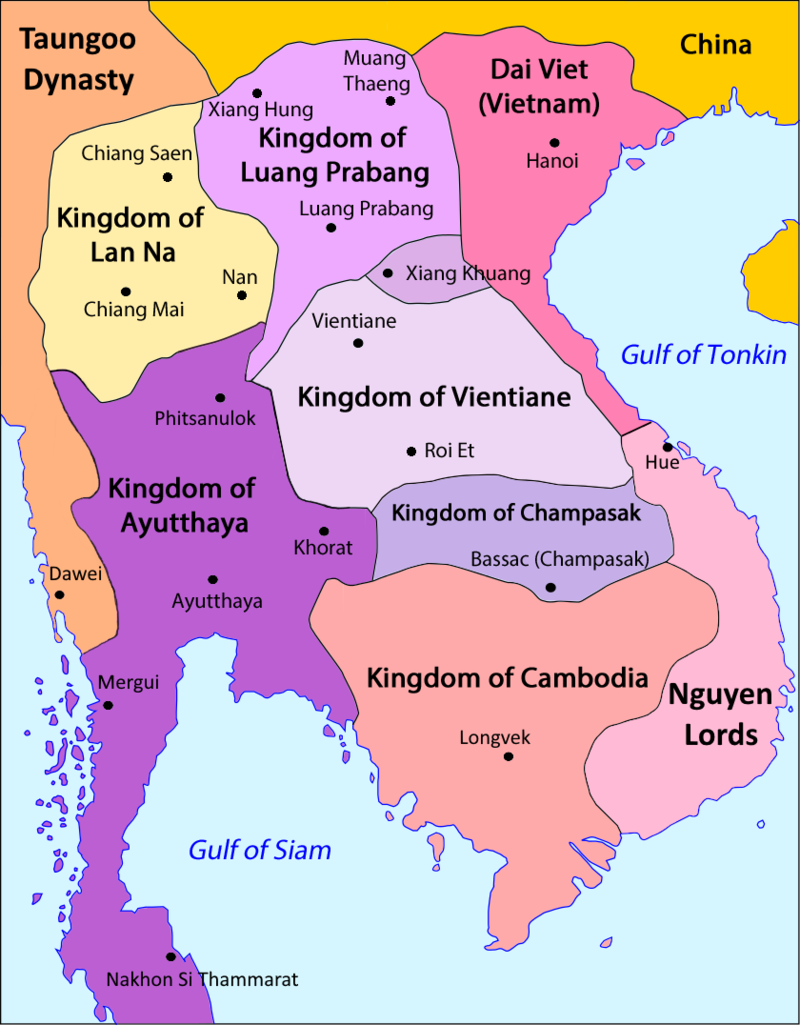
The Kingdom of Ayutthaya had briefly been destroyed in a war with Burma, but had arisen even stronger as the new Kingdom of Siam. (See my post on Ayutthaya for more information). In 1778 Siam attacked Vientiane and in a few years controlled directly or indirectly through vassalage all three Laotian kingdoms. The victors removed the most venerated Buddhist icon in the country, the Emerald Buddha and took it to the Grand Palace in Bangkok where you can still see it today. Worse, they enslaved huge number of the Lao population and took them to Siam to where they were put to work on large scale public projects. Hard as it is to believe at this seemingly late date in history when anti-slavery movements had led to the abolition of the practice in most of the west, Laos became a hunting ground for slavers well into the late 1800’s.
It was slavery that was the pretext for the next group of outsiders to control Laos’ destiny. The French had been poking around the area since the mid-1800s and found a country that was almost completely depopulated and in ruins. In 1893 they had a short war with Siam that ultimately led to a French protectorate. For a short while the area was governed from Vietnam which had been a French colony for some time. In 1899 the administration was moved to Vientiane and a reconstruction project was begun which lasted right up until 1939 when WWII broke out. The Japanese never invaded Laos, but between it, the newly renamed Thailand and the Vichy government in France, Laos became a pawn in the bigger game of decolonization. One government after another was established by one faction and then toppled by another. Even after the war this continued until 1953 when the French finally left and Laos became an independent country ruled by a supposed constitutional monarchy.
From the moment of independence right up until the end of the Vietnam War Laos was the scene of civil war and the site of undeclared warfare between North and South Vietnam and ultimately the United States. The North Vietnamese invaded in 1958 to build the Ho Chi Minh Trail which provided arms and troops safe haven to South Vietnam. That is until the United States, in an attempt to stop the flow made Laos the most bombed country on earth. The North Vietnamese also funded the Pathet Lao communist party that ultimately took control of the country in 1975 and still rules it today. Up until 1989 Laos was a closed society, much like North Korea, but recognizing the need for foreign currency in what was one of the poorest nations on earth, tourists were allowed to visit. Numbers grew to as high as 4.38 million in 2019, most of whom were Chinese. Covid put a quick end to that and only in 2022, after a two year closure, were tourists allowed back in. Adventures Abroad was among the first North American companies to return.
The Itineray
Except for a few places like Vientiane and Luang Prabang, infrastructure in Laos is primitive to say the least. The roads, of which I’ll have more to say later, are generally terrible, but are the only realistic way to get from place to place. I’ve created the map above to show the Adventures Abroad route with A,B,C and D representing the four places the tour will spend at least one night.
Now for the highlights and the reasons you’ll want to go to Laos in the first place. I’ll present them in the order in which you visit and not necessarily from the best to the second best etc. They are after all highlights.
1. Luang Prabang
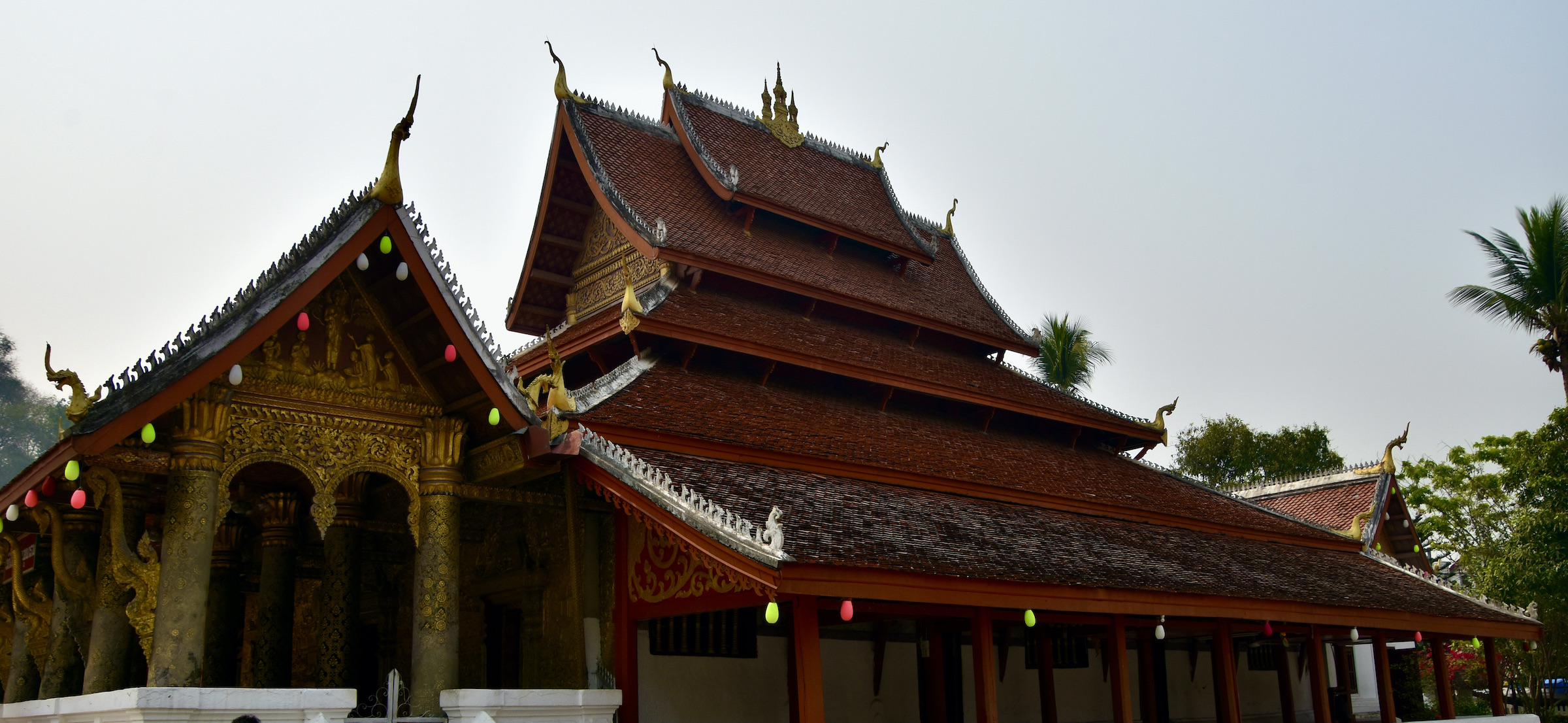
Despite being a nominally communist country Laos, has one of the highest percentage of followers of Buddhism in the world with two thirds of the population being Theravada Buddhists. The city that most embodies the religious spirit is undoubtedly Luang Prabang the former royal capital. It is a UNESCO World Heritage Site recognized for its many different Buddhist temples and royal buildings in a beautiful location on a peninsula where the Mekong and Nam Khan rivers meet. The tour visits a number of these buildings upon which I will expound in a future post.
2. Alms Giving in Luang Prabang
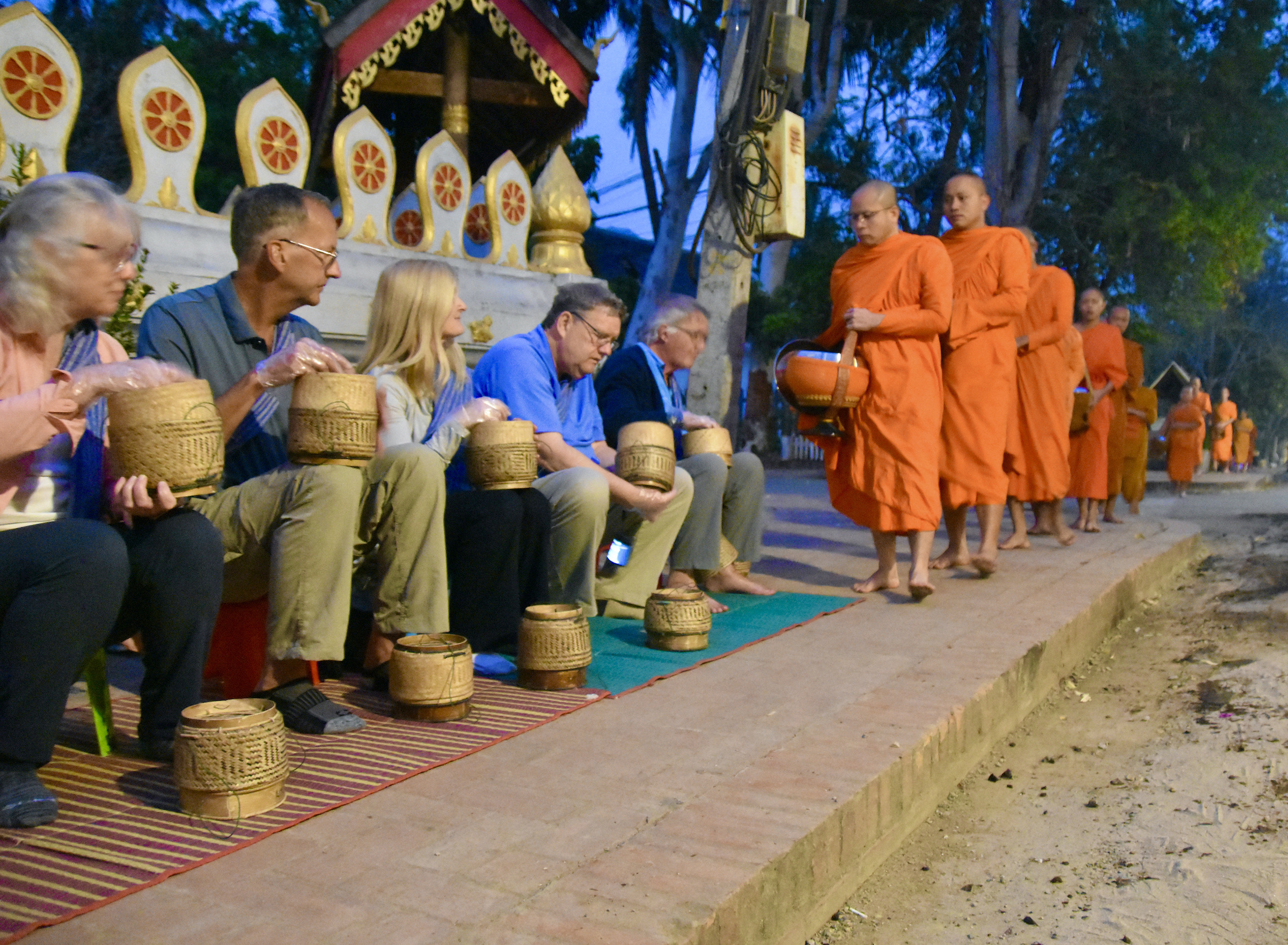
Luang Prabang has 34 temple complexes and most of them have monks living in them. In a tradition dating back to the 14th century the monks arise at dawn and seek alms from the local people who have prepared rice for them. Each monk has a covered basket into which each alms giver puts a small amount of rice. You do not have to be a local or a Buddhist to become an alms giver. As you can see we participated in the practice and while I was quite leery of the legitimacy of tourists becoming ‘part of the act’ as you might say, I found it was a profoundly moving experience of which I’ll write in more detail.
3. The Mekong River in Laos
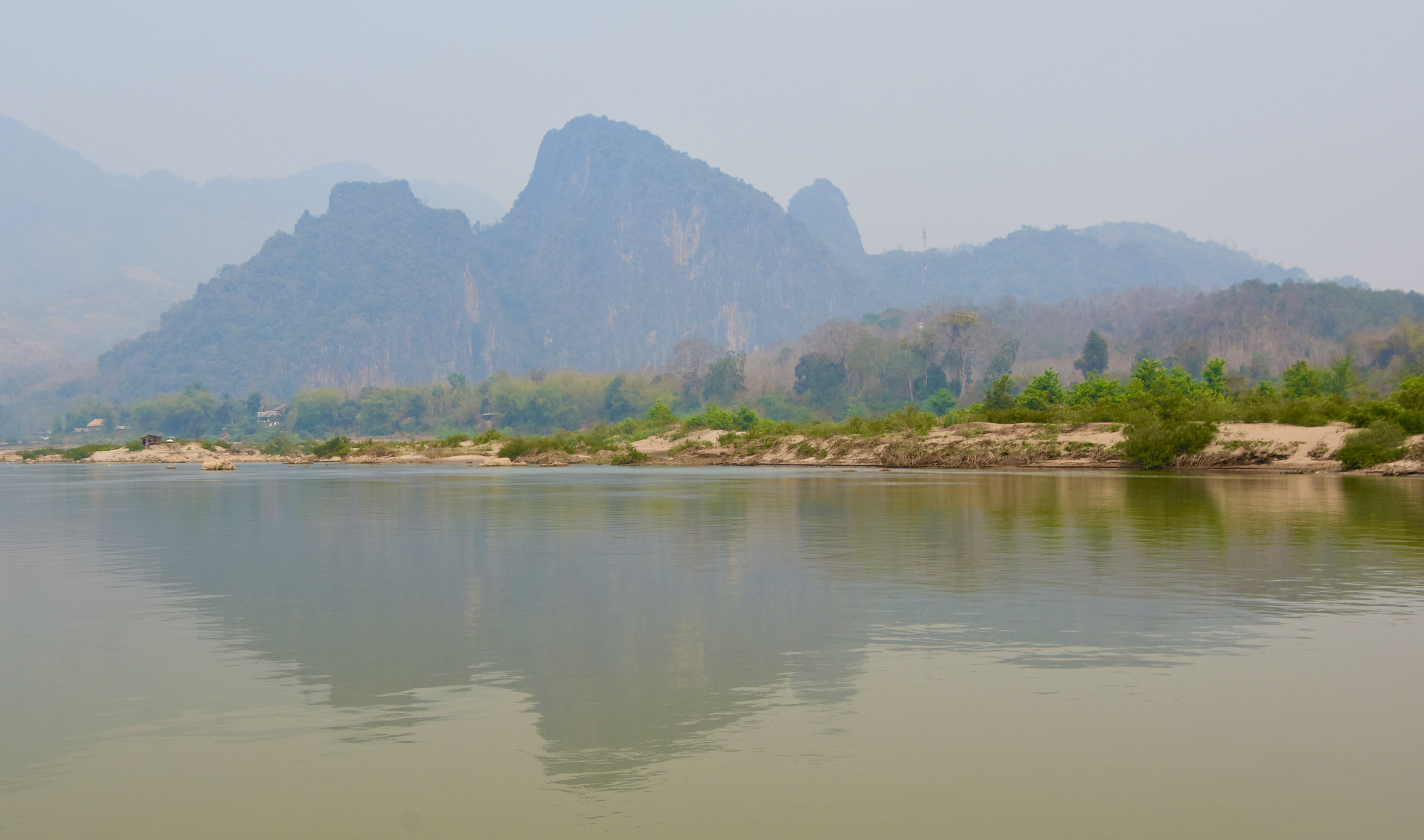
The Mekong River will play a major part of our southeast Asian adventure as we will see it in Vietnam and Cambodia, but it is in Laos that I first laid eyes on this historic waterway that passes through six countries on its way to the South China Sea. While in Luang Prabang you will spend a day on a privately chartered river boat that takes you up to the sacred Pak Ou caves where you can chose to climb up and see hundreds of miniature Buddha statues left by religious adherents hoping for answers to their prayers.
4. The Markets of Laos
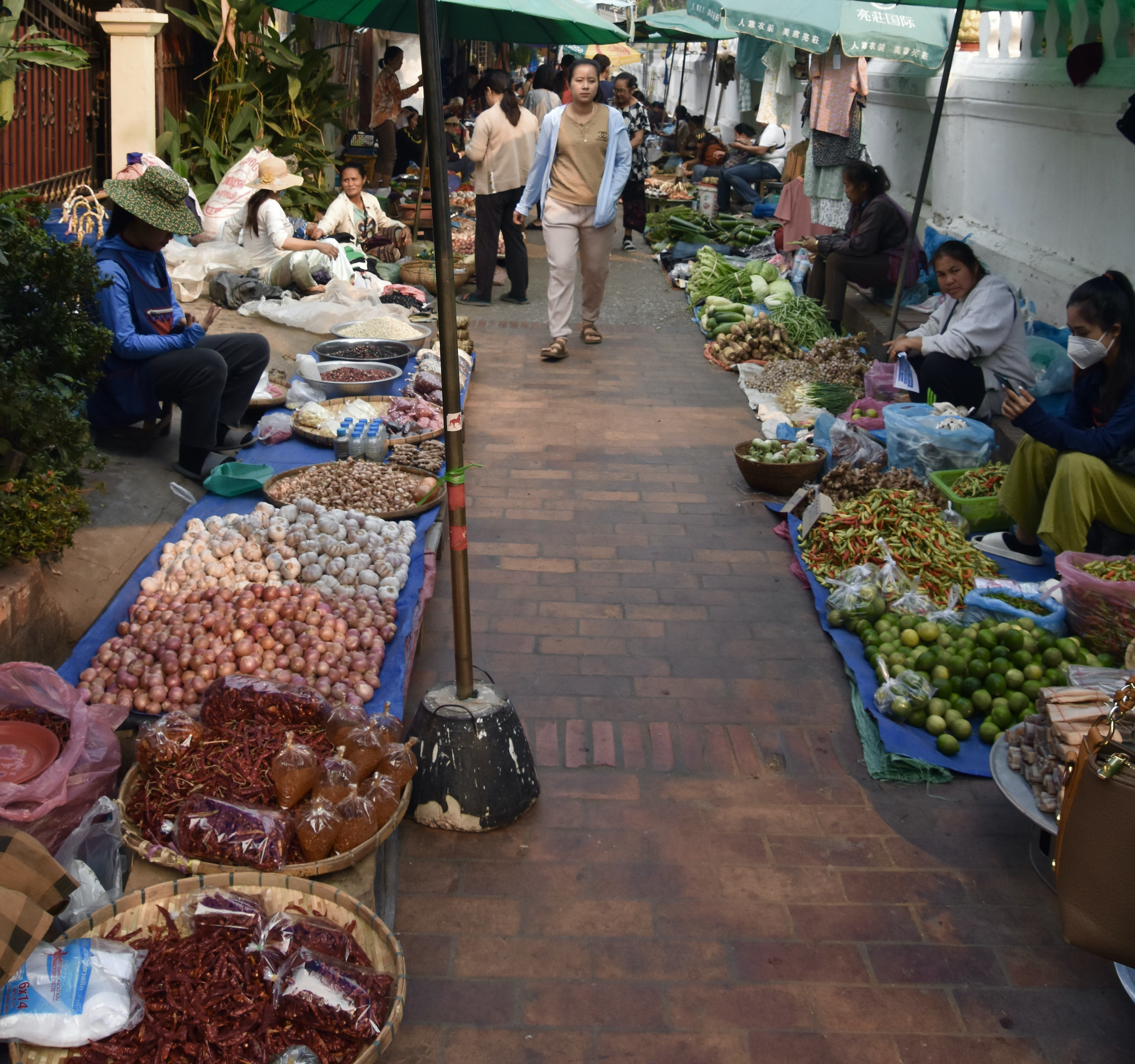
Anyone who follows my posts will know that I am not a shopper, but somewhat paradoxically, a lover of genuine markets and you will visit a number while in Laos, starting with this one in Luang Prabang. There are two basic types. The night markets feature a lot of prepared food and non-food items like clothes for sale. This is where you might buy your first pair of elephant pants. These also tend to be the more touristy of the markets with both genuine local handicrafts for sale as well as Chinese made junk.
The other markets open early in the morning and offer all types of food items for sale to the locals, including meat and fish. These are sometimes referred to as ‘wet markets’ and the word has become pejorative ever since possibly being implicated with the origin of Covid in a market in Wuhan, China. I’ll have more to say about that later in this post.
5. Visiting Hmong and Khmu Villages
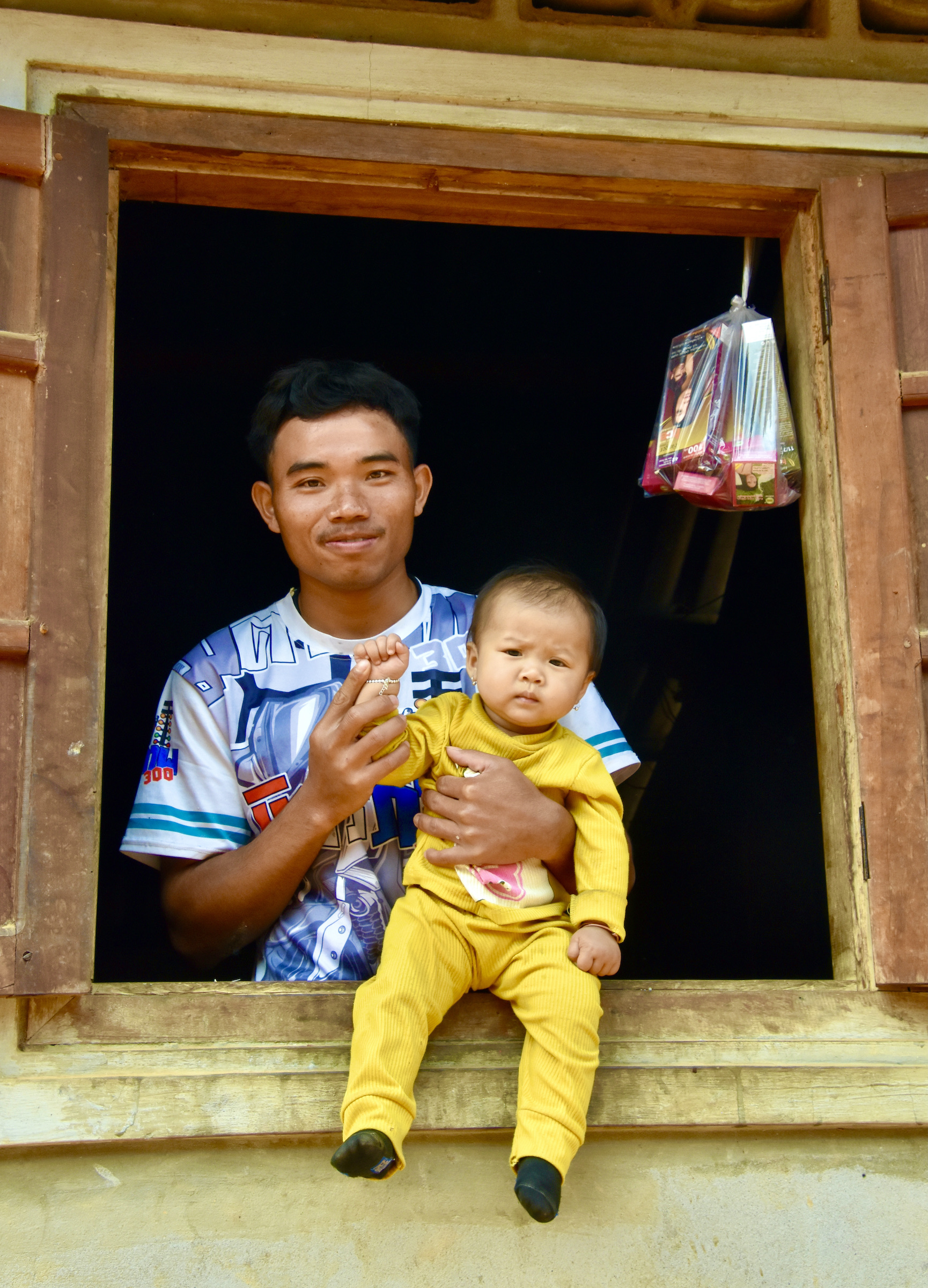
You won’t find this on the AA itinerary, but there’s a better than even chance that on your way from Luang Prabang to Phonsavan and the Plain of Jars your local guide will stop at small villages where two of Laos’ most impoverished and persecuted minorities are to be found, the Hmong and the Khmu people. By our standards these villagers are extremely poor, lacking almost everything we westerners think are vital to a happy life. But as you can see from the photo above happiness is not dependent upon material goods. These visits were done in a respectful manner and instead of coming away shaking your head in despair at the conditions the villagers are living in, chances are you will feel uplifted by what you see. I know I was.
6. Laos’ Plain of Jars
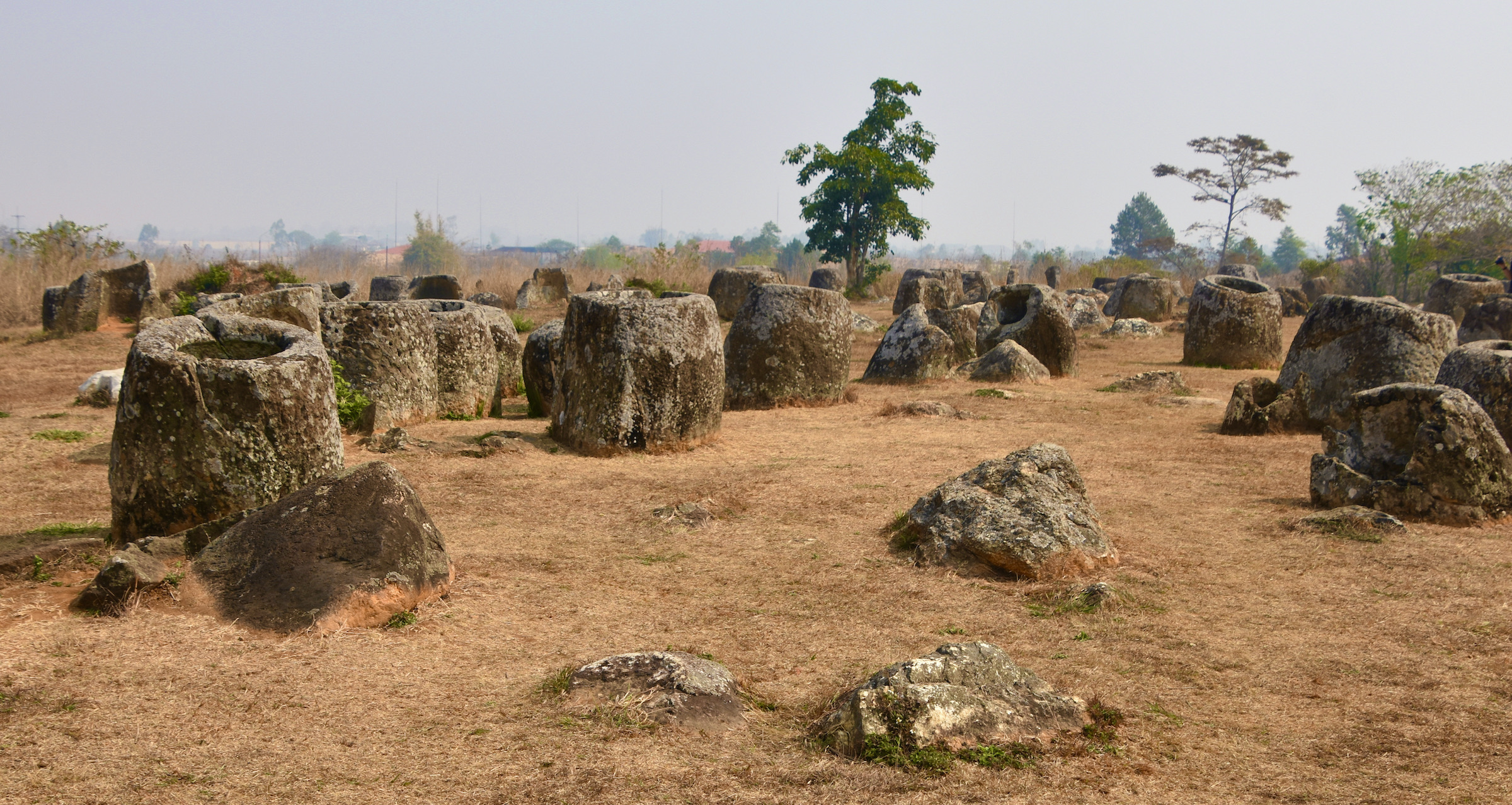
The Plain of Jars is the second UNESCO World Heritage Site you will visit on this tour. It is one of the great archaeological mysteries of the world. Who built the 2,100 stone monuments spread over fifteen sites and why remains largely unknown. Visiting them in three different locations gives you an inkling of just how magnificent these sites are and a realization of just how very different they are from any other archaeological site you have ever visited. They are not easy to get to, but well worth the effort. It is also here that you will come face to face with the reality of how the Vietnam War continues to impact this country.
7. Vientiane
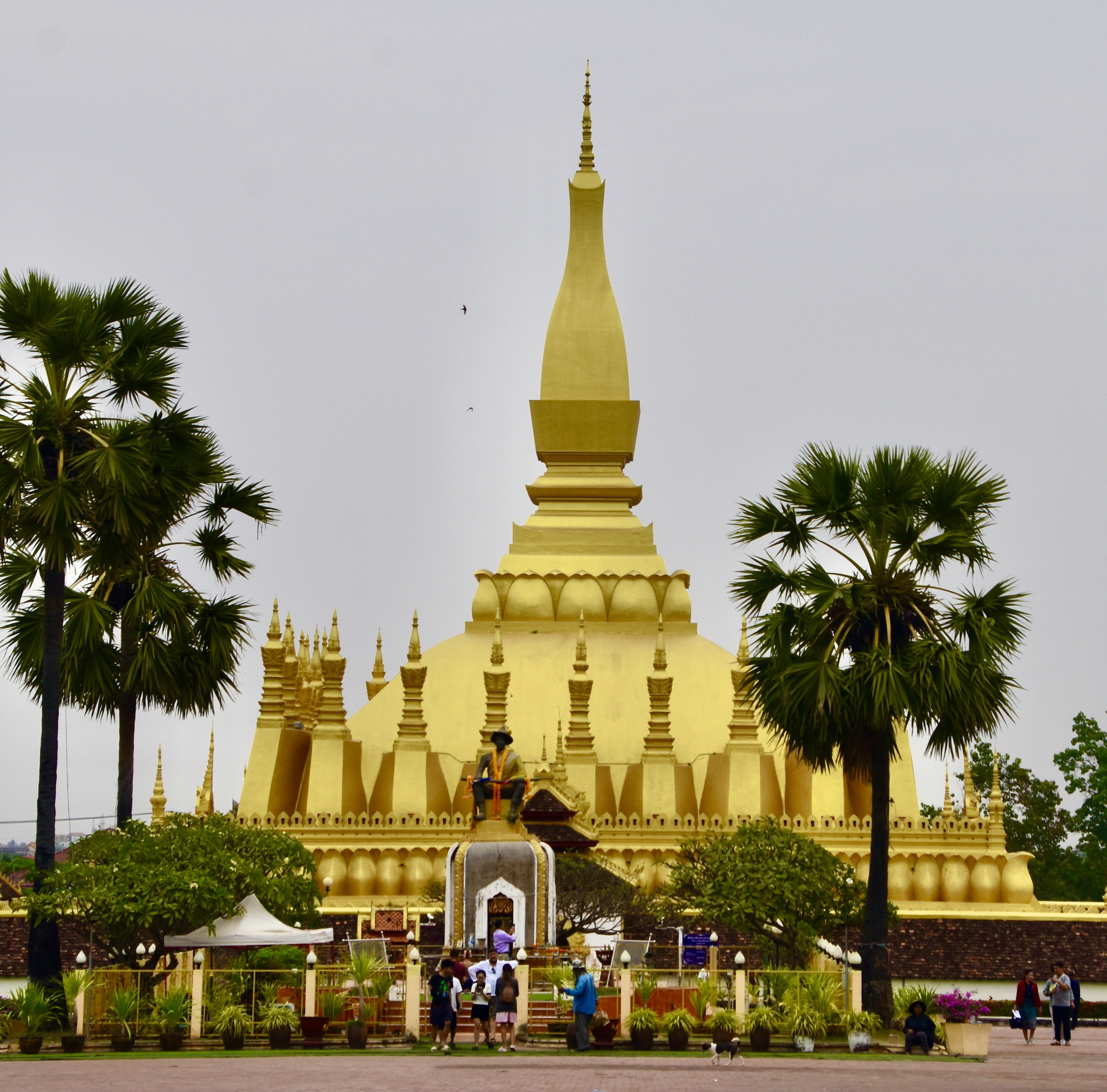
The tour ends in Vientiane and after a week spent in mostly rural Laos the city will come as a real surprise with its combination of modernity and monumental Buddhist architecture. It was a great place to end the tour and it compared very favourably to the other large cities we visited later in the trip.
8. The Food
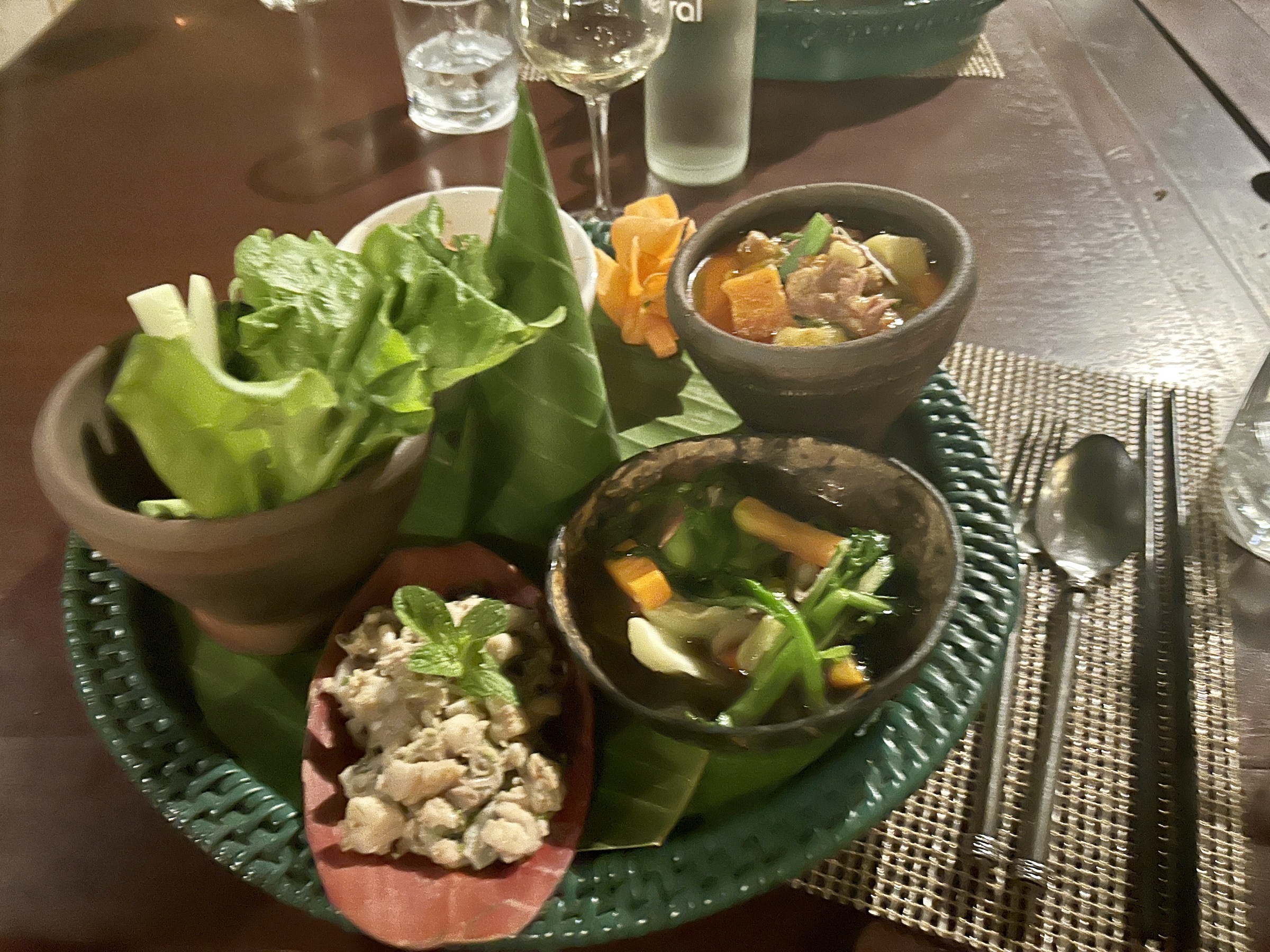
I’ve never been on an Adventures Abroad tour where the food was not part of the experience and Laos was no exception. Sticky rice will be present at almost every meal, but from there you have a great variety of choices including green papaya salad and larb, which if you are meat eater, you will love. Most of our meals were taken at traditional restaurants and there was no issue with cleanliness. No one on the tour had any food related illnesses. Vegetarians and vegans will have no trouble in Laos. Lunches are on your own and if you want non-Laotian food you can get it then. I had one of the best Cuban sandwiches I’ve ever tasted in Luang Prabang.
9. The Hotels
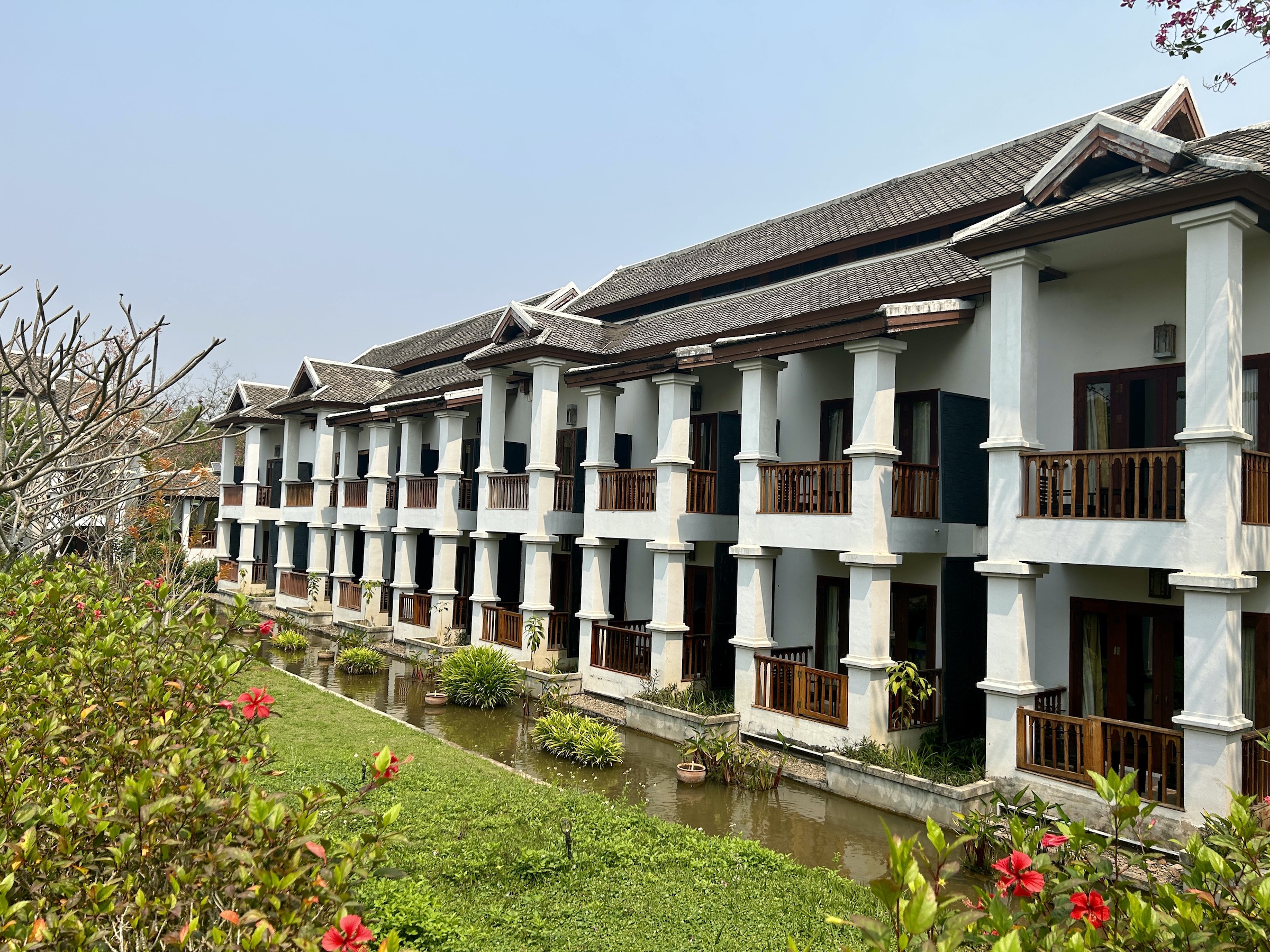
Adventures Abroad never lets me down when it comes to the hotels they choose which first and foremost means they must be absolutely clean with expected amenities like good plumbing, decent internet and a multi-choice breakfast buffet. We had all of those plus swimming pools, nice bars and gyms in some locations. If you are concerned that as a third world country you cannot get good accommodations there, put your mind at rest.
10. Claude Morency
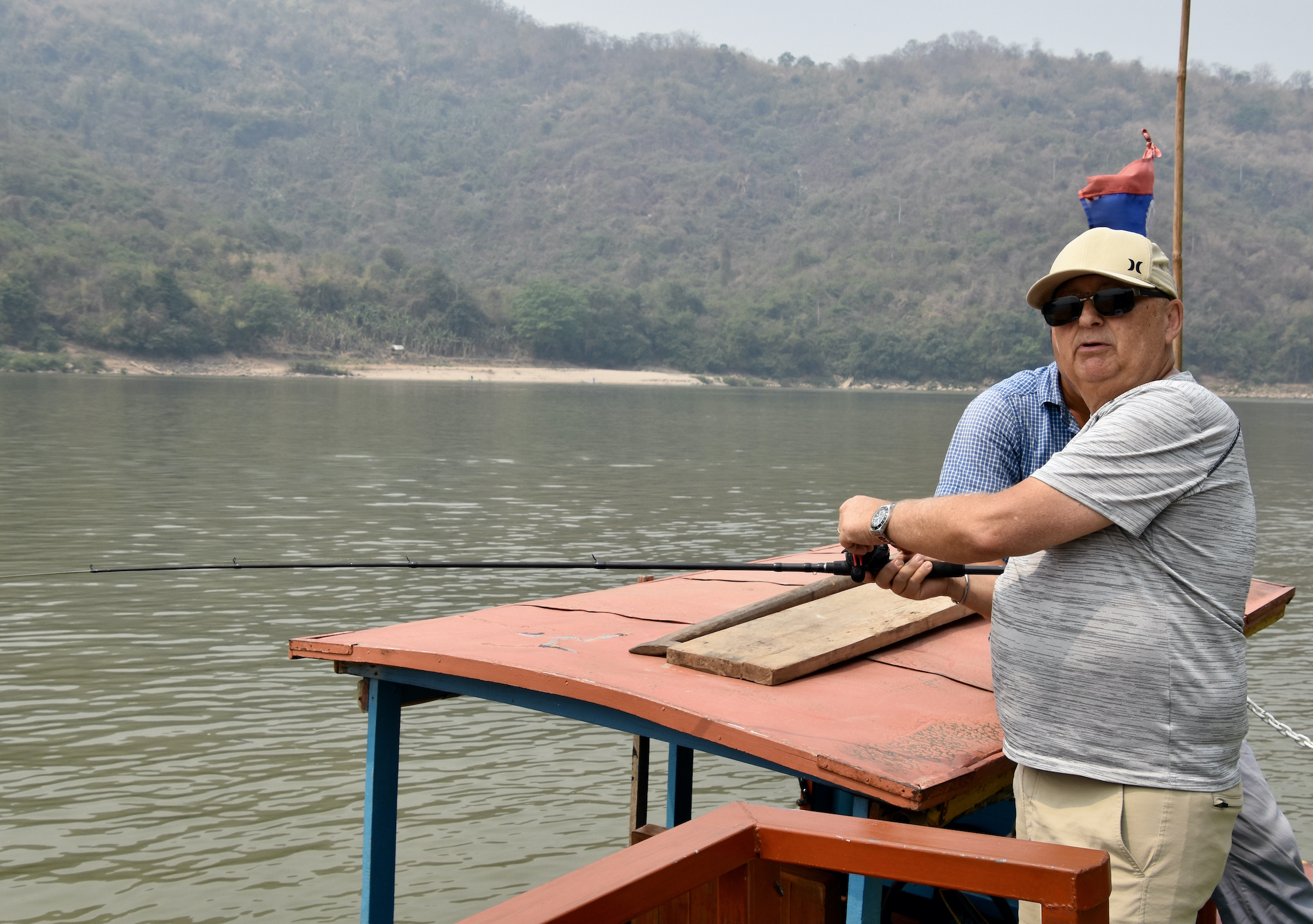
Claude Morency is one of Adventures Abroad’s longest serving guides and he has led tours on six continents. However, this was our first trip with Claude and I hope it won’t be the last. He is an avid fisherman as am I, but more importantly his knowledge of all things related to Buddhism made the Laotian portion of the trip much more understandable to me. I’ll have more to say about Claude in upcoming posts, but you are in good hands if he is the tour leader.
Having provided ten good reasons to visit Laos I think it is only fair to list some of things you will see and experience while there that might be outside your comfort zone.
First and foremost is the widespread use of slash and burn agriculture.
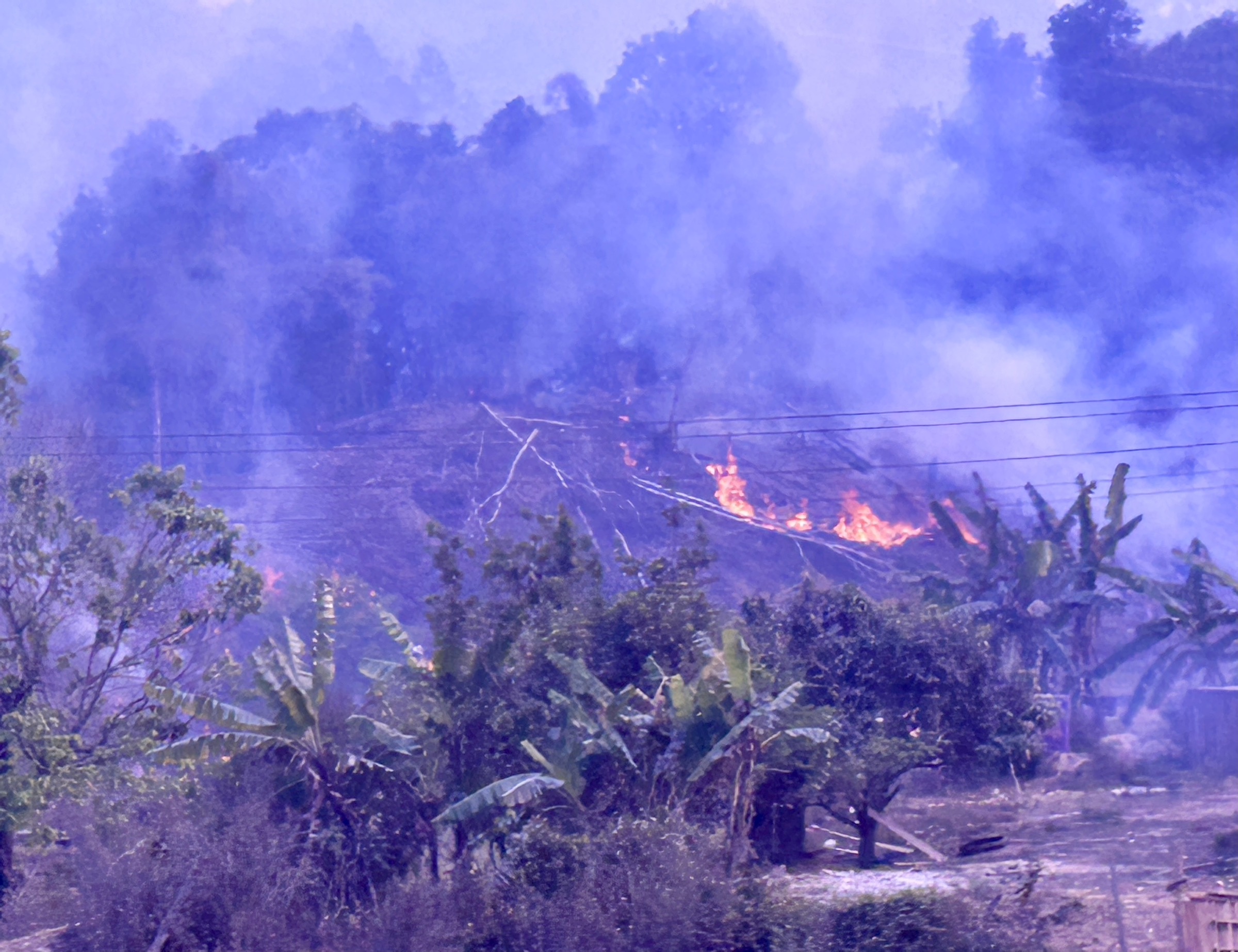
This is the oldest known type of agriculture in wooded areas and has been practiced for thousands of year. It involves cutting down native vegetation and then burning it which leaves an ash residue that is quite productive for a few years until the soil is exhausted. Then the farmers move on to a new patch. The result of slash and burn is that Laos is constantly covered in a smoky haze that is not unlike what some people in North America experience when massive wildfires break out. For those with bronchial issues this can be more than an annoyance. For me it wasn’t an issue, but I was disappointed that we never got a truly sunny day because while the sun was out, the sky was obscured by the smoke.
As a third world country, outside the cities and major towns Laos does not have an organized garbage collection so you are going to see a lot of trash everywhere. That is certainly not unique to Laos, but coming from North America it’s always disconcerting to see, but it’s a fact of life in very poor countries.
Perhaps tied into the slash and burn issue is my next comment which was a disappointment for someone who is a life long birder, is the almost total lack of wildlife to be seen in Laos. I had expected abundant birdlife, especially along the river banks and in the tropical forest canopy, but next to nada. There are wildlife sanctuaries in Laos, including one very close to Luang Prabang dedicated to rescuing moon bears which we visited, but that was about it for wildlife. So if your primary reason for selecting a destination is birding or wildlife viewing Laos is not the place.
As mentioned above the roads in Laos are about the worst I have ever travelled on. Since the rural people tend to live on or near the crests of mountain ridges rather than on the valley floors, the roads are incredibly winding with great elevation changes. Most of the traffic on the main highway between Vientiane and the Chinese border are semi-trailers hauling heavy loads at a snail’s pace while destroying the roads at the same time. That is why it takes a full day to drive from Luang Prabang to the Plain of Jars even though it’s only 350 kms.(218 miles). Personally I’m used to these type of journeys and just try to enjoy the fact that I’m seeing something new around every bend, but if you get nauseous in these type of situations, and people did, be forewarned.
When you visit the wet markets you are going to see things offered for sale that might turn your stomach, either because the very thought of eating what is being offered is nauseating or because you are seeing endangered species such as some turtle species, porcupines and others. Knowing there is nothing you can do about the latter doesn’t make it any less disturbing, but avoiding going and pretending it doesn’t exist isn’t helpful either.
Lastly, this is for my American friends. What the United States did with its clandestine bombing campaign in Laos during the Vietnam War was undoubtedly a war crime. Hundreds of people are killed or maimed every year due to unexploded ordnance. The US is, in my opinion, doing a pittance to clean up this situation which it caused, although many NGOs are doing what they can. After visiting the Plain of Jars you will also visit one of these NGOs and get a first hand view of the enormity of what was done to the Laotian people. Personally, I would think this was a learning opportunity and for me it was, but as a Canadian I do not bear the onus of responsibility of being a citizen of the country that caused this. I highly recommend reading or listening to as I did, Joshua Kurlantzick’s A Great Place to Have a War which details the secret war in Laos. It will leave you much better prepared to not only understand what happened, but also the consequences to the Hmong people who sided with the Americans in that war.
I am not going to end this post on a down note. The reality is that Laos is a safe country to visit in terms of security, food, disease and other concerns usually raised when thinking about whether or not to go to a third world country. At no time during my visit did I ever regret coming and I would go again to visit the large parts of Laos that were not included on this itinerary.
In the next post from Laos I’ll introduce the reader to the many charms of Luang Prabang.

